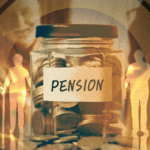Despite being a country prone to sickness, calamities, and financial struggles, most Filipinos still do not see insurance as a necessity.
Be it for health, life, or property, the coverage remains low, especially among the poor.
According to the Insurance Commision, only 52 million were covered by some form of insurance as of 2022, which is less than half of the population—this includes both life and non-life insurance, with a majority of it enrolled in group or microinsurance policies instead of individual plans.
And millions of Filipinos are uninsured, many of whom continue to rely on family or luck during emergencies.
What is Insurance?
Insurance is a financial tool that helps protect people from the cost of unexpected events or emergencies such as illnesses, sudden deaths, or property loss. In exchange for a regular payment which is called a “premium”, a person receives the promise of financial support when tragedy strikes. It does not stop bad things from happening, but it helps the person recover when they do.
The price of insurance varies depending on the type of plan. Basic life or health insurance can range around 500 to 700 pesos per month, while more advanced plans with more benefits can reach several thousands. Payments are usually made monthly, quarterly, or annually, usually depending on the plan, but monthly is the most common for regular workers.
For people earning minimum wage which total to around between 14,000 to 15,000 pesos per month, a 500 peso cut from their budget is big. That money could go to food, rent or utilities. While smaller plans that go for as low as ₱50 a month, most people do not know its existence or where to even get them.
The Struggle to Understand and Afford
Insurance in the Philippines is steadily growing, although at a very slow pace which is reflected by the 0.11% increase in the insurance penetration. For many people, it remains a confusing product with unclear benefits. Policy terms tend to be hard to grasp, and the cost feels too steep for something that does not offer instant help.
Ferdinand George Florendo, the Deputy Commissioner at the Insurance Commision, cited a World Bank Report that says only 1 in 4 Filipinos are financially literate, which contributes to the slow growth of the insurance industry. Adding to this, the percentage compared to other neighboring countries such as Malaysia or Singapore is relatively low, coming at 39% and 59% respectively.
When you are choosing between paying for food or paying a policy fee, insurance always loses. Poverty affects over 15% percent of the population, and many others are just a medical bill away from collapse. Without extra money to spare, people skip formal protection and just hope for the best.
Superstition Over Strategy
There is a deep belief among many Filipinos that planning for sickness or death invites it. The phrase “bahala na” or “whatever happens, happens” when translated in english, reflects how people place more trust in fate rather than financial planning. Insurance feels unnatural, even taboo. Preparing for the worst is not seen as being responsible but as being pessimistic.
Rouselle Isla, a licensed life insurance advisor turned journalist specializing in finances and economics, said this kind of thinking is common across the country. She claims that many Filipinos tend to leave everything to fate or faith, adding that this blind optimism also stops many from getting insurance.
The Good and Bad of Insurance
Insurance helps a lot during hard times. It gives you the financial support you need when you get sick, have an accident, or lose a loved one. According to the Philippine Health Insurance Corporation and other private insurance companies, having insurance coverage can help people avoid massive expenses by covering hospital bills, medicines, and treatment costs. Insurance can also give better access to hospitals and medical services.
But it also has its downsides. You need to regularly pay the policy even if nothing happens, making it look like a waste of money. Premiums can be expensive, especially for plans with other extra features or investments. For people who live on a tight budget, paying for insurance feels like money they can not spare.
Until insurance becomes simple, affordable, and trusted, it will remain out of reach for many Filipinos. Cultural beliefs, low incomes, and a lack of information about them keep the system from working as it should. The need for insurance is real but unless the industry changes how it listens or explains, most people will continue to face the risks of life all alone.








